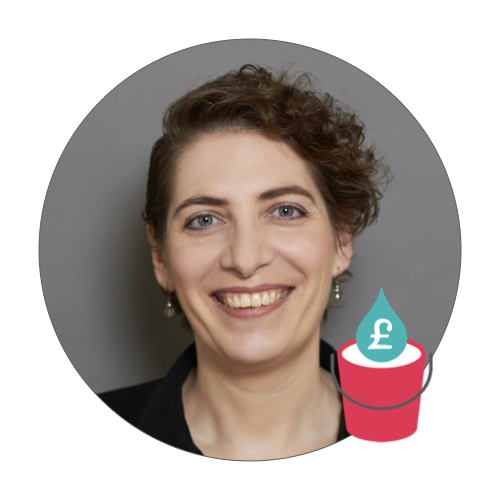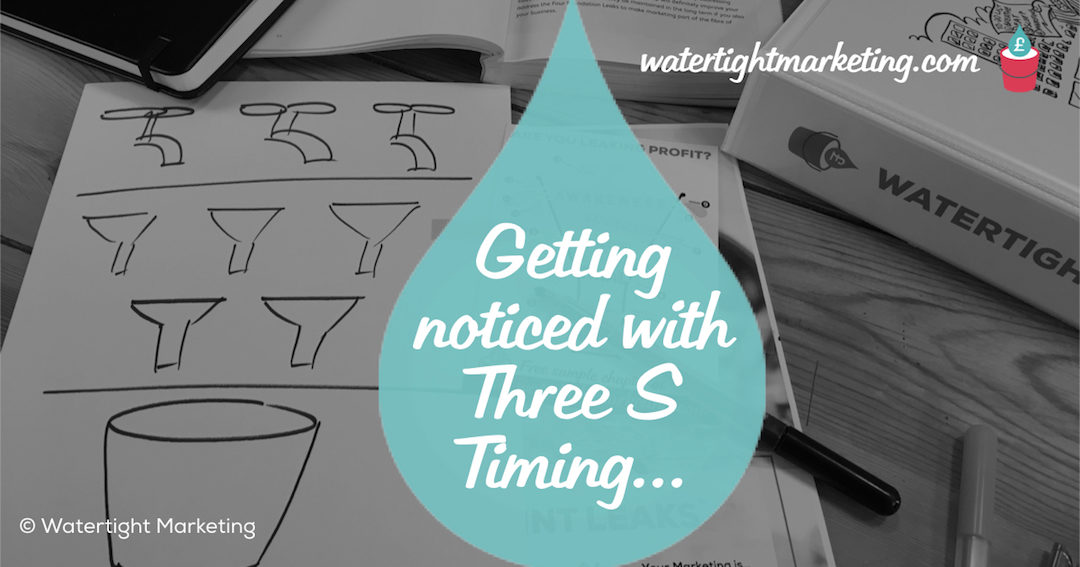The middle section of the Watertight Marketing Framework shows how developing a range of time-chunked materials will help you to earn the right to increasing durations of a person’s time. Once you have these materials in place, you need to master what I’ve taken to calling Three S Timing:
- Selectivity
- Scheduling
- Seasonality.
Selectivity – showing up when they’re in a buying mood
You’ll often find that a customer reports that winning their business was a result of ‘lucky timing’. That is, you happened to show up when they were looking for what you sell. Luck has very little to do with this. What’s actually going on here is selectivity. And, it’s where marketing frequency is absolutely essential.
Have you ever noticed how when you learn a new word, it seems to crop up on the news, in the book you’re reading, or in conversation with a friend? It was always there, you just didn’t notice it. The same is true when you’re on the look out for a new car, you’ll suddenly see the model you have in mind passing you at every turn or parked next to you at the supermarket. This is a trick of the mind.
To enjoy the fruits of ‘lucky timing’, your company needs to crop up when a person happens to be thinking about what you’re buying. Which, effectively, means being there all the time. To do this, you need to commit to a number of regular marketing activities rather than one-offs, or big bang campaigns. The frequency of these will depend on buying cycles in your industry. What you’re aiming for is to act a little like a lighthouse, with a beacon flashing regularly enough to be seen at the right moment.
TIP: Commit to a small number of regular marketing activities. For example, a weekly blog, a monthly newsletter and quarterly direct mail.
CASE STUDY: Comet Global Consulting
When Comet Global Consulting, customer technology specialists, were looking for some strategic marketing support, one of their directors recommended my consulting business. I had worked with him for about six months when I was in corporate marketing some three years earlier, and we had connected on LinkedIn. He had never signed up for a newsletter, or clicked on a blog. There was nothing to say he knew anything about my new business. Every week (without fail) I update my LinkedIn status with my latest blog post. This had the effect of just popping up in this buyer’s newsfeed regularly enough to express what I do. When it came to needing what I offer, he finally clicked on a link. But, without the previous 150-odd updates, he may not have noticed this one.
Scheduling – showing up when you know they’re looking
With a commitment to a steady stream of ongoing activities, you can further increase your chances of showing up at the right time by understanding and matching your buyers’ work patterns and scheduling your communications to match. Mapping a typical day, week and year for your buyers will help you to work out when to get in touch. For example, Mondays and Fridays probably aren’t best for your direct mail to arrive with a business person. And, calling a consumer at home during working hours is pretty futile.
TIP: Use scheduling tools to maintain a presence outside normal office hours. If you need to respond in these times, think about using a call-handling service.
Seasonality – tapping into moments of heightened need
There’s also seasonality to consider. Even if you’re not an ice-cream vendor, there will be seasonality in your market. Financial year-ends, school holidays, industry events, funding cycles and the like, can all lead to seasonal changes in demand. Map things that happen over the course of a year that you could talk about or help with. There will be events that happen every year, like getting your tax return in on time, and there will be one-offs in that year specifically, like a big sporting event. The former should be worked into your ongoing marketing plan, the latter should form part of your specific 12-month plan. There may also be dated triggers that relate to an individual or specific company, like renewal dates, that would allow you to time your communications perfectly.
TIP: If you collect key data, like year-end or birthdays, when people sign-up for your email newsletter, you can set-up automated emails to go them at these times.
© Bryony Thomas | This is an adapted excerpt from Watertight Marketing.

Bryony Thomas
Author & Founder, Watertight Marketing
Bryony Thomas is the creator of the multi-award winning Watertight Marketing methodology, captured in her best-selling book of the same name. She is one of the UK's foremost marketing thinkers, featured by the likes of Forbes, The Guardian, Business Insider and many more, and in-demand speaker for business conferences, in-house sales days and high-level Board strategy days.



Trackbacks/Pingbacks